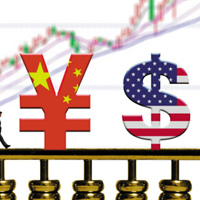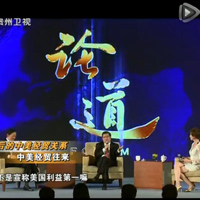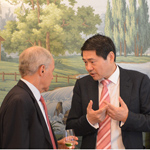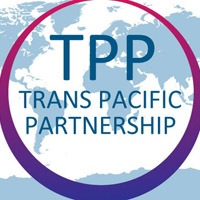-

【中国贸易新闻】海外投资:宁可慢些但要好些
“2015年,中国对外投资额首超吸引外资额,开始步入资本净输出阶段,中国首次成为资本净输出国。”中国与全球化智库(CCG)主任王辉耀在近日举行的《中国企业全球化报告(2016)》发布会上说。记者从CCG获悉,中国企业全球化研究课题组收集整理了2000年至今的近3000个中国企业“走出去”案例,在系统研究分析的基础上,归纳总结出中国企业全球化的现状与特点,并针对中国企业“走出去”的困难和瓶颈,即国际标准参与度不高、企业人才国际化水平低、与国际非政府组织(INGO)协调欠佳、与工会对话机制亟待解决、企业品牌国际化战略遇阻和对东道国政治风险应对能力不足等,提出了解决建议。报告指出,2005年以来,中国对外直接投资流量连续10年持续增长,2015年达到了1456.7亿美元,首次超过日本,位列全球第二。其中,中企投资亚洲、欧洲及北美地区较多,投资领域也呈多元化,在传统的资源、能源行业和制造行业积极开拓海外市场的同时,高新技术、房地产、文化产业投资也频繁活跃于国际舞台之上。另外,中国企业海外并购攻势强,全产业链国际化布局加速;跨国并购不断攀升,绿地投资显著增长;中国企业形成“抱团模式”,跨产业扶持“走出去”。企业对“一带一路”乐观展望,未来投资力度有望加大。继2015年创历史记录后,中国企业海外并购2016年强势开局,今年上半年中企发起的海外并购交易金额已经超过去年全年。不过,前驻旧金山、纽约总领馆经济商务参赞、CCG高级研究员何伟文在研究报告中力推“中国企业海外并购宁可慢些,但要好些”的主张,直指中国企业海外房地产投资比重过大,高端制造业尤其是生物医药工业并购和投资滞后等问题。2015年清华紫光收购美国芯片设计制造公司美光,2016年中国化工收购瑞士农业种子公司先正达,说明中国企业投资海外高端制造业出现良好势头,但是投资热情仍远不如在房地产、酒店和娱乐产业。何伟文说:“例如,生物医药工业不仅关系到13亿人的生命福祉,而且集中了现代科技诸多领域,包括生物技术、化学、新材料、人工智能等的优秀成果,因此无疑是我国企业海外并购和投资的重点。但这方面迄今的并购和投资规模与房地产、酒店行业相比黯然失色。”“中国海外投资行业同‘十三五’规划的现代产业体系吻合度高吗?”何伟文对此提出质疑。他分析说,中企海外投资集中度高的是批发零售、银行保险、信息和通信技术、半导体、汽车制造、农业、酒店、旅游、娱乐、体育、医院、教育等,其中完全符合“十三五”规划建立现代产业体系要求的主要是半导体和信息通信,其次是农业、传统产业升级和消费升级相关领域。而与新能源汽车设计制造、新一代互联网技术、现代农业、海洋装备、环境产品、生物技术等相关的投资还比较少。“从这个意义上来说,我们需要对海外并购多一些顶层战略设计,需对照国家发展的产业体系要求,对未来的重点并购项目和绿地投资项目进行框架指导。”他说。除此之外,企业海外投资往往伴随着高杠杆和债务风险,应对此高度重视。报告指出,中国企业在海外大规模的“不差钱”并购是建立在高杠杆基础上的。这是因为在欧美开展并购,能够获得当地贷款者寥寥无几,资金问题主要是通过国内银行的大规模慷慨贷款解决,其中也有政府鼓励补贴。“这是与中央‘去杠杆’的精神相悖的。企业带着巨额债务完成大宗收购,最后决定还款能力的是经营利润。但被收购企业之所以被收购,其原因无非是已亏损或有亏损预期。”何伟文认为,中国企业本身的高负债率决定了其偿债能力不足且欧美市场的动荡性、投机性很强,一般的中国企业很难驾驭。何伟文说:“目前,中国海外并购疯狂增长,很难具有可持续性,需要及早总结,及时调整,宁可慢些,但要好些。”何伟文说,“毕竟从完成并购到收回投资,要经过很长时间,其间的金融风险往往很难预测,因此,我们应忌讳大量债务的敞口。”文章选自中国贸易新闻,2016年12月1日
2016年12月12日 -

【论道】大选后的中美经贸关系
特朗普当选美国第45任总统,中美经贸关系会受到怎样的影响,全球自由贸易体系如何继续推进?前外经贸部副部长、中国入世首席谈判代表、中国与全球化智库(CCG)主席龙永图,与中国驻旧金山、纽约总领馆前经济商务参赞、中国与全球化智库(CCG)副主任何伟文,为您一一道来。
2016年12月12日 -

【中国日报网】全球化不可逆转,中国应积极推动FTAAP方案倡导自由贸易
中国与全球化智库(CCG)副主任何伟文在报告会上发言。 中国日报网12月8日电(记者 聂立高)12月8日, 中国与全球化智库(CCG)在其北京总部发布了以“逆全球化思潮下的中国方案”为主题的系列研究报告。 中国与全球化智库主任、国务院参事王耀辉博士和中国与全球化智库副主任、高级研究员何伟文分别就两份报告作了说明并回答了在场媒体记者的提问。 《客观认识逆全球化积极推进包容性全球化》和《FTAAP:后TPP时代的最佳选择?》两份研究报告由王耀辉、何伟文两位智库学者主笔,针对近半年来一系列国际事件引起的人们对全球化的质疑和担心提出系统化的分析和应对方案。 何伟文研究员梳理了近期的一系列国际事件后指出,“当前世界贸易增长缓慢、保护主义增强等为代表的逆全球化现象并不表明全球化趋势正在或即将发生倒退。”他认为全球化是一种客观经济发展规律,不以人的主观意志为转移。 同时,何伟文研究员也指出,这些逆全球化的现象也多少反映了全球贸易下的资本运行带来的就业以及贫富差距拉大等客观存在的社会问题。 针对上述情况,这份报告给出了“汇聚全球思想”、“参与国际规则指定”和“坚持国内改革”推动“包容性全球化”的综合性中国应对方案。 “我们可以坚信美国将回归自由贸易和开放贸易,这是不可阻挡的客观经济规律。”何伟文表示,发达国家失业的真正症结所在是技术进步而不是全球化。“贸易成为了替罪羊,如果我们能够很好的解决这些问题,我们可以继续的引领自由贸易。” 在题为《FTAAP:后TPP时代的最佳选择?》的研究报告中,从中美利益最大化的角度,王耀辉博士阐述了中美共同推动FTAAP 将是“后TPP时代”的最佳选择。 在美国当选总统唐纳德?特朗普明确表示了其退出由美国主导其他11国参与签署的《跨太平洋伙伴关系协定》(TPP)之后,王博士指出,中美共同推动建立一个亚太自贸区(FTAAP),才能让亚太地区全球价值链的整合进一步释放红利,从而为区域和全球经济提供更大福祉,FTAAP 将是后“TPP时期”的最佳选择。 作为中国领先的国际化智库,“中国与全球化”长期关注并致力于中国的全球化战略研究。文章选自中国日报网,2016年12月8日
2016年12月12日 -

【China Daily】Top think tank head untroubled by Trump
Modern trade deals should move to a more sophisticated version 2.0, which includes globalization, center’s president saysWang Huiyao insists that, in light of the impending withdrawal of the US from the Trans-Pacific Partnership, trade treaties need to deal better with the complexities of globalization.Wang, who is president of the Center for China and Globalization, China’s largest independent think tank, says the deals now need to be more version 2.0 than 1.0."The old concept of free trade was to have no tariffs, and everything to be free within a group of countries.Wang Huiyao, president of the Center for China and Globalization, China’s largest independent think tank, sees the likely collapse of TPP due to US non-participation as an opportunity to reshape Asia-Pacific trade."We now need to come up with something more complex than that, which maybe sets a few boundaries and adds some new rules," he says."The US could enter into a treaty with China, for example, where there is a condition that China has to invest in manufacturing in the American Rust Belt, which would help Trump provide jobs there."Wang, who was speaking in his offices in Hanwei Plaza in Beijing’s Chaoyang district, sees the likely collapse of TPP due to US non-participation as an opportunity to reshape Asia-Pacific trade."There is more hope of this under Trump than with Hillary (Clinton). With her we would still be on 1.0. But now we can go on to 2.0."Appointed a counsellor on the Chinese State Council, or cabinet, last year by Chinese Premier Li Keqiang, Wang says one of the fault lines of the TPP was that it did not include China and was seen as being part of President Barack Obama’s pivot to Asia strategy, of which Clinton was a leading architect as secretary of state.He believes there is an opportunity for a new trade agreement that includes both the United States and China."Why don’t they just do another trade deal and write the rules? Here is an opportunity for the clever politicians to demonstrate some capacity for leadership and get a new deal approved," Wang says."China and the US are the two largest trading nations in the world, and they have one of the largest bilateral trading relationships as well. So any major trade agreement for the Asia-Pacific without China or the US can’t really be complete or workable."Wang believes the new administration might be open to a strong relationship with China, despite Trump’s threatening during his campaign to impose a 45 percent tariff on Chinese imports.He says a recent article by Trump’s national security adviser, James Woolsey, in the South China Morning Post - which argued that Obama’s opposition to China’s Asia Infrastructure Investment Bank (AIIB) was a mistake - was encouraging."I think this alone sends an enormous signal to China that there may be movement on a lot of issues. It might be that China might invite the US to join its Belt and Road Initiative. There might be a lot more flexibility about these things," he says.Wang, 57, founded the globalization center in 2008. It now has more than 100 staff members, 50 in Beijing and the rest in offices in Guangzhou, Shenzhen, Qingdao and Shanghai. There are also representative offices in Washington, New York and Europe.The center publishes special reports in a number of areas, including Chinese enterprises expanding overseas, developing talent and global governance.Wang believes the vehicle for taking trade negotiations forward could be the Free Trade Area of the Asia-Pacific, or FTAAP, which was first discussed at the Asia-Pacific Economic Cooperation (APEC) meeting in Hanoi in 2006.Chinese President Xi Jinping gave fresh impetus to it in his keynote address at the APEC meeting in Lima, Peru, in November.Such a free trade agreement would likely involve the 21 Pacific Rim members of APEC, including both China and the US."With what has happened to the TPP, it could now succeed. I also think Donald Trump, who is both a businessperson and pragmatist, would also see it as a good way of engaging with China and the Pacific countries," Wang says.He believes that the TPP is effectively now dead in the water."It still exists, but as (Japanese Prime Minister Shinzo) Abe said it is now irrelevant," he says.Wang, who grew up in Sichuan, had his education interrupted by the "cultural revolution" (1966-76). He was among the generation of Chinese students that returned to university studies in 1978.He studied English and American literature at Guangzhou University of Foreign Studies before going on to do an MBA at the University of Windsor in Ontario, Canada.He became chief trade representative to the Quebec government in Hong Kong and China, returning to China in 1993.Wang, who has a PhD from Manchester Business School, has taught at Peking University’s Guanghua School of Management and at Tsinghua University, and is also a visiting fellow at the Brookings Institution and a senior fellow at the Harvard Kennedy School. He has also held a number of key business positions.He attended the official opening ceremony of a new factory of Chinese auto glass maker Fuyao, which will be the largest in the world, in Moraine, Ohio, in October. The plant currently employs 2,000 but this is expected to grow to as much as 2,500 by the end of next year."More than 800 people attended - governors, congressmen, people from the local community and also from the Brookings Institution and other such bodies. I think it is a really good example of how trade and investment between China and the US can be maintained," Wang says."If Donald Trump really wants to make America great again this is how he can do it: by encouraging more Chinese investment in the US. It is a way of delivering good jobs and better incomes for people in these areas of the US were people feel their living standards have fallen behind."He is confident Trump as president will be open to such arrangements and will not impose barriers on imported Chinese goods, which he believes are unworkable."He was talking tough during the campaign but we have seen he is a flexible man," Wang said. "He said he was going to jail Hillary and now he is not. He said he was going to build a wall (along the Mexican border) and now its is only a fence. He was going to scrap Obamacare and now he is only going to modify it. What you see is a businessman’s flexibility," Wang says.Wang believes there is a need to move away from the anti-China rhetoric that underpinned the TPP.Obama said when he wanted congressional backing for the treaty that it was important China did not "write the rules"."We still have a Bretton Woods system of governance that was established at the end of the World War II," he says. "The US has to accept that China is no longer a follower in the international system but needs to be a participant in the rule-making. The blunt language from Obama was not helpful. We now have an opportunity to reshape world trade." (By Andrew Moody)From China Daily,2016-12-4
2016年12月12日 -

【多维新闻网】并非一意孤行 特朗普抛弃TPP三大真因
美国新当选总统特朗普日前“将在上任第一天退出跨太平洋伙伴关系协定(以下简称TPP)”的公开表态在全球引发热议。多数观察者认为,特朗普此举的原因是要践行竞选期间他最响亮的口号之一:“保护美国工人的就业机会”。不过,中国与全球化智库(CCG)高级研究员、中国商务部美大司原司长何宁、北京大学国际关系学院教授、中国与全球化智库(CCG)学术专家委员会专家査道炯等专家学者日前在公开场合表示,“保就业”很可能只是个表象,协议条款保密程度过高、让美国有“主权受损”的观感以及过于理想的开放条件是特朗普决定让美国退出TPP的深层原因。 特朗普自当选总统以来,做事风格已经有了明显的改变,对很多自己曾在竞选期间尖锐批评的问题,比如调查希拉里、全民医保法案、“美墨边境高墙”等,态度都大为缓和。但在TPP的问题上,他似乎又变回了那个让人大跌眼镜的特朗普。 其实在竞选期间,特朗普就多次宣称TPP是一项“糟糕的交易”,如果当选一定“退出”。依据他的逻辑,TPP协议主张成员国之间自由贸易,美国制造业人工成本高,工业品没有市场竞争力,如更大程度施行自由贸易,美国贸易逆差将加大,进而不利于美国制造业就业和美国整体经济。 但当他以候任总统的身份正式宣布“退出TPP”的时候,他的坚决还是让人多少有些惊讶。有评论认为特朗普这是在保护自己的政治基础:这次美国大选,美国中下层工人对特朗普的支持是特朗普能够最终获胜的关键因素之一(“铁锈地带”的摇摆州全部投了特朗普),这些人笃定生活质量下降是因为受到全球化的冲击,在急于做出改变的心理下,才投票给特朗普;特朗普此番退出TPP,是兑现自己的政治承诺。不过在日前中国与全球化智库(CCG)举办的一次论坛上,多名大陆学者认为特朗普固然有自己的政治考虑,但其中更深层次的原因还是在于TPP自身存在问题。 查道炯指出,其实奥巴马推行TPP的过程中,就在美国国会遇到了强大的阻力,其中一个重要原因就是协议条款的保密程度太高,“谈判的过程高度保密,高度不透明”,任何一个国会议员都无法得知其中的内容,甚至连倾向性的东西都不知道,这让TPP失去了在美国内部体制运作的基础。特朗普本就打着“反全球化”的大旗,他又何必为了自己前任的政治遗产去和美国国会做对?这是他执意要退出TPP的第一个深层原因。除了国会,美国民众中间也有相当比例的群体反对TPP(图源:Getty/VCG) 第二个深层原因,在于TPP中的条款让美国人有“主权被侵犯”的观感。根据TPP的协议文本,成员国之间出现的贸易纠纷,双方可以在第三方国家的法院进行诉讼程序。也就是说,如果争议的一方是美国公司或美国政府,那么对方可以不在美国的法院打官司,“爱上哪儿起诉就上哪儿起诉”。这在美国引发了很大的非议,“美国怎么能把自己的司法权交给这么一个协议去管?” 特朗普虽然在竞选期间精心塑造了自己“反政治正确”的形象,但他反的是左派主张的“政治正确”,碰到“政权”这样基础的政治正确问题,特朗普显然不想也不会去引火烧身。 何宁道出了特朗普退出TPP的第三个深层次原因:美国人发现自己亏了。他表示,“美国技术派的人把大量的精力都放在了规则上”,破天荒的完成30多项新的规则案例,其实是打造了一个新的国际贸易模板,这个模板“其实是美国长期以来梦想的”,代表了未来区域性自由贸易中的最高标准。而这也是为什么当初奥巴马有意要把中国排除在TPP之外,因为美国总是认为“中国在国际市场开放当中占了便宜”,WTO就已经让中国“搭了顺风车”,不能让同样的事情再次上演。 但由于TPP的门槛过于理想化,以至于美国在签订协议后回头一看,这份协议中只有美国自己是高度开放的,其他成员国多多少少都“不达标”,只能“给一些灵活政策,让他们有一个过渡期”。这个过渡期有可能是两三年,也有可能是十几年,相当于又出现了“搭顺风车”的情况。这让美国觉得“自己亏大了”。 特别值得一提的是,根据一家国际数据机构给出的量化分析,TPP生效后,美国汽车关税要降到0,制造业出口得利益最多的可能是越南。而制造业是特朗普的“政治基础”,所以无论是从他个人的政治利益还是美国的国家利益来说,TPP都是他不能接受的。文章选自多维新闻,2016年11月30日
2016年12月12日 -
黄亚生:中国该如何应对第二次逆全球化
黄亚生,美国麻省理工学院斯隆管理学院副院长、政治经济和国际管理教授、CCG学术专家委员会专家。新视角:首先请您谈一下这次会议给您带来的最大感受。您肯定也参加了很多学术会议,不知道这次会议有没有什么不一样的地方?黄亚生:之前没有参加过华人组织的会议。我去年在白宫受邀参加一个亚裔美国人方面的会议,会议不仅邀请了华人,还有印度人等等。但这次会议的区别在于,参会者大部分都是第一代移民,我本人就是。过去,第一代华人移民对美国的事情并不是特别关心,更多是关心中国的事情,或者关心自己的学习或者工作,对美国的政治之类事情并不是很关心。这次的会议不同,它会让很多第一代华人移民对美国政治产生兴趣,因为在美国,如果不参与政治,就不能在政治领域有所获得,参与10%,获得就是10%,参与20%,就会获得20%,所以我觉得这次会议很好。 我崇尚自由的教育方式新视角:您在演讲的时候有提到华人的小孩很少选择学习艺术或者是社会学、法律等学科,我想问一个私人问题,您怎么教育您自己的孩子?您有没有特别鼓励他学习什么学科?黄亚生:我完全尊重孩子的兴趣。我觉得未来经济的发展、世界的发展、人类的发展,离不开科技,所以孩子们必须了解这方面的知识,希望他们对相关学科产生兴趣,但是如果孩子没有兴趣,我也不会去强迫他。我一直跟他们讲,如果不懂计算机、不懂数据、不懂数学,在未来社会上的发展会有很多困难,这个确实是时代特征决定的,但是我还是希望他们对其他各个方面都有兴趣。所以我崇尚自由的教育方式,主要培养他们的兴趣,而不是规定他们发展的方向,很多中国家长都不是这样的。新视角:刚才百人会会长吴华扬讲了他小时候在底特律受到的歧视。您的孩子有没有也遇到类似的情况?黄亚生:吴华扬成长的年代和现在差别很大,因为他1970年代在美国长大,而且是在底特律,那时候底特律还没有特别多华人,而现在我所在的波士顿,华人非常多,大家不会觉得很新鲜或者很奇怪。美国现在的种族问题我觉得主要是在几个区域比较严重,但是像波士顿,也可能也存在,不过至少从我自己现在还没有感觉到特别多。“中国模式”的提法并不成立新视角:关于“中国模式”您写过一本书,接受过很多采访,都有谈到一个观点,即中国模式并没有非常特别。您可不可以在这里再简单谈谈?黄亚生:(关于这方面)我写过一本书,也写过这方面的文章,都是很多年以前做的。新视角:您现在依然坚持早前的观点吗?黄亚生:中国政府要强调中国模式、中国特征,但是从学术的角度分析,会发现很难支撑这种观点。中国最重要的经济成功是因为中国的经济改革,从计划经济逐步发展到市场经济,这在其他国家的发展经历中也都可以发现,所以看不出特别多的支持中国模式的证据。 民企盈利能力远高于国企新视角:您觉得中国经济现在面临的比较大的问题是什么?黄亚生:从根本上讲,国家(政府)在经济领域的位置和地位在加强,我觉得这是中国现在面临的最大的问题。政府在整体经济中的作用在不断加强,这跟中国模式有直接的关系,因为“中国模式”观点认为中国独特的国有企业体制是中国成功的一个重要原因。而我们所掌握的数据则表明正好相反,中国越是实现了私有化的地方,经济反而越是成功。新视角:您也说到民营资本比外资要重要。黄亚生:对,因为两者规模是完全不成比例的,中国如此巨大的一个内陆型国家,GDP总量也非常大,吸引再多的外资,占整体经济比例还是非常低的,而民营资本则在中国经济中占比非常高。这是我在2003年出版的一本英文著作中提到的观点,该书中文版于2005年出版,全书主要讨论中国经济中的民资和外资关系。当时的中国和现在的中国对民营资本都有很多限制,而当时还在鼓励外资,只是不鼓励民资,现在某种程度上连外资都不鼓励了,这就是一个很大的问题。新视角:有些专家认为民有和国有等所有制问题并非最关键因素,最关键的在于运营模式,如果国有企业的运营模式正确也不会有特别大的问题,比如法国的国有资本也很大。黄亚生:我恐怕很难赞同这种看法,以中国国有企业为例,从账面上看部分国企确实有盈利,但是盈利的大部分来自于其垄断地位和政府补贴,特别是来自于资本市场的补贴。如果考虑到这些特殊政策,则国有企业根本没有盈利。而且即使是在有这么多的政策和资金市场补贴的情况下,它的盈利能力还是远低于民营企业。中国城市化进程致城乡差距越来越大新视角:您在这本书里有一章专门写到了城市化如何让农村受益的问题。黄亚生:对,中国的城市化是在特定制度基础下的城市化。首先,任何国家的城市化都没有户籍制度,而户籍制度实际上限制了人的流动性,但是城市化本身是要增加人口的流动性;另外,其他国家,比如韩国在城市化过程中,城镇和农村的收入接近于平衡,而中国的城市化过程则导致了城乡差距越拉越大。实际上,中国的城市化,我的那本书里将其称为政治城市化而不是经济城市化。经济城市化,首先应该增加人口流动性,其次农村和城镇收入会自然的处于平衡状态,而在中国两者都没有看到。当然,我在书里也有解释,实际上即便这样的城市化也不是中国所独特具备的,巴西1960年代也有实行过相类似的政策,最后都失败了。新视角:您今天下午提到中国的GDP里面只有35%是家庭消费,而美国则高达百分之七八十,这里面包含了什么意义?黄亚生:美国的GDP增长,主要是靠生产消费型商品的企业带动的,而中国的GDP增长,则更多的是靠投资型企业带动,比如铁路、机场。很多例子都能证明,中国现在的基础设施投资大量过剩,中国经济失衡的根源也正在于此。但是中国政府为了追求GDP,又不得不去投资很多这种项目,而在我看来这么做意义有限,因为中国不需要追求这么高的GDP增长速度。新视角:社会保障制度的缺乏是否也是大家不敢消费的一个原因?黄亚生:是,中国政府现在做的很多事情并不是在加强社会保障,而是进行基础设施建设。一个政府,更多的事情应该是社会性投资,例如加强社会保障、失业保险、医疗保险等等,只有这样做才有可能逐渐降低储蓄率,增加消费,我认为,这是中国政府应该重视的事情。 第二次逆全球化新视角:您提到的第二次逆全球化,可否详细介绍一下?黄亚生:1990年代是第一波全球化,当时的全球化是整个全球资本的重新整合,比如当时中国的劳动力成本很低,土地价格也很低,于是中国很快成为世界工厂,全世界很多产品在中国生产,沃尔玛每年都会在中国进行大规模采购,这就是所谓的第一轮全球化。但这个模式存在着问题,因为中国的低成本,有人为因素在里面,中国的制度本身就能够使自身的人力成本实现人为降低,这不是因为经济的影响,而是因为体制的影响;再比如土地成本,中国的商业用地、工业用地成本非常低廉。中国这样的国家,出现人多地少的现象,是完全不合理的,从长久来讲也是不可持续的;再有则是1990年代全球能源的低成本优势。而到2003、2004年以后,能源成本大规模上升,土地价格大规模上升,之后劳动力成本也开始大规模上升,全球产业链安排就变得非常不合理。再就是美国最近取得了多项新技术上的突破,例如页岩气开采技术和人工智能。美国新的页岩气开采技术,能够使得页岩气价格非常低;而人工智能则可以节约劳动力成本。如果现在到美国的工厂去参观,会发现大量的人工岗位被人工智能替代了。因为经济的最终决定力量是市场,市场在哪儿,生产就应该在哪儿,而对比美国与中国的经济成本,优势在美国一边。中美经济增长对比中,美国70%依赖消费拉动,而中国只有35%,所以美国的市场力量还是很强大。新视角:中国在第二次逆全球化中该作何应对?黄亚生:防御是不可能的,只能是采取一些补救措施,最重要的是发展国内市场,降低储蓄率,增加消费。这里也还有很多体制上的原因,比如户籍制度、土地制度等等,这些都是压抑中国老百姓消费的非常重要的原因。文章选自新视角,仅代表专家个人观点,不代表机构立场
2016年12月12日 -

【Bloomberg】China’s Xi Pledges Open Trade Despite Trump Protectionism
Xi Jinping speaks in Lima on Nov. 19. Photographer: Guillermo Gutierrez/BloombergChina pledges to boost global trade and cooperation by opening up further and giving greater access to foreign investors, President Xi Jinping said on Saturday.China wants to create a level playing field for foreign and local companies so that they can share in the Asian country’s growth, Xi said in a speech at the Asia-Pacific Economic Cooperation meeting in Lima.Xi called on APEC members to reject attempts to slow down cooperation between nations in a pointed reference to U.S. President-elect Donald Trump, who won an election this month by saying he will protect his country from free trade agreements that he says are destroying American jobs. A protectionist mood in the U.S. spurred by Trump’s victory means the Trans-Pacific Partnership, which doesn’t include China, is increasingly unlikely to be ratified by Congress.“We should deepen and expand cooperation in our region,” Xi said. “Any attempt to undercut or exclude each other must be rejected.”Xi said China is working on an early conclusion in negotiations for the Regional Comprehensive Economic Partnership, an Asia-wide trade pact that it has championed in recent years. That deal has returned to focus given the fading fortunes of the TPP that would have taken in about 40 percent of the global economy.Moving ahead on the RCEP would give the world’s second biggest economy greater sway and a bigger say in creating trade rules. It would boost China’s geopolitical clout in a region where it has territorial disputes with neighbors including Japan, Vietnam, Malaysia and the Philippines and is looking to displace decades of U.S. strategic dominance.“It’s a very good opportunity for China to push RCEP. The uncertain future of the TPP gives momentum to the RCEP, which is an easier-to-do alternative,” said He Weiwen, deputy director of the Beijing-based Center For China and Globalization (CCG) and a former business attache in the Chinese consulates of New York and San Francisco. “China has played a big role in pressing ahead on regional economic integration and globalization. It serves China’s strategic interests”Growth challengesXi said that China will import $8 trillion of goods over the next five years while it expects to receive $600 billion in foreign investment and invest $750 billion overseas. China is overcoming challenges to growth through a series of reforms and economic production for 2016 is within range, Xi said. The economy grew 6.7 percent in the first nine months of the year, he said.“Reforms will make China’s investment climate more favorable and transparent,” Xi said. “This will allow foreign companies to share in China’s growth opportunities. We will also encourage more Chinese companies to go global.”Since it became an APEC member in 1991, China has sought to increase its clout within the group, with a focus on trade. It has been the world’s largest exporter since 2010, even though last year its domestic economy grew at the slowest pace in 25 years amid a decline in global demand and domestic restructuring.Xi’s week-long trip to Latin America, with stops in Ecuador, Peru and Chile, is his third to the region since he became president. Trade volume between China and Latin America has risen more than twenty-fold in the past decade, reaching $236.5 billion in 2015, according to Xinhua. China is the second largest trading partner and third largest source of investment for Latin America, while the region is China’s seventh-largest trading partner.The RCEP, which would be the first pan-Asian trade deal ever, was launched by the Association of Southeast Asian Nations in 2012 and has gone through 15 rounds of talks. Negotiators are looking to accommodate India’s fears of a widening trade deficit with China, as well Japan’s reluctance to open its agricultural sector.The 16 countries involved in RCEP include the 10 members of Asean plus China, Japan, India, South Korea, Australia and New Zealand. They represent about 30 percent of global gross domestic product and almost half the world’s population. Some had already signed up for the TPP. As for the five TPP signatories in the Americas, they would be left out.(By John Quigley and Ting Shi)From Bloomberg, Nov. 19, 2016
2016年12月12日